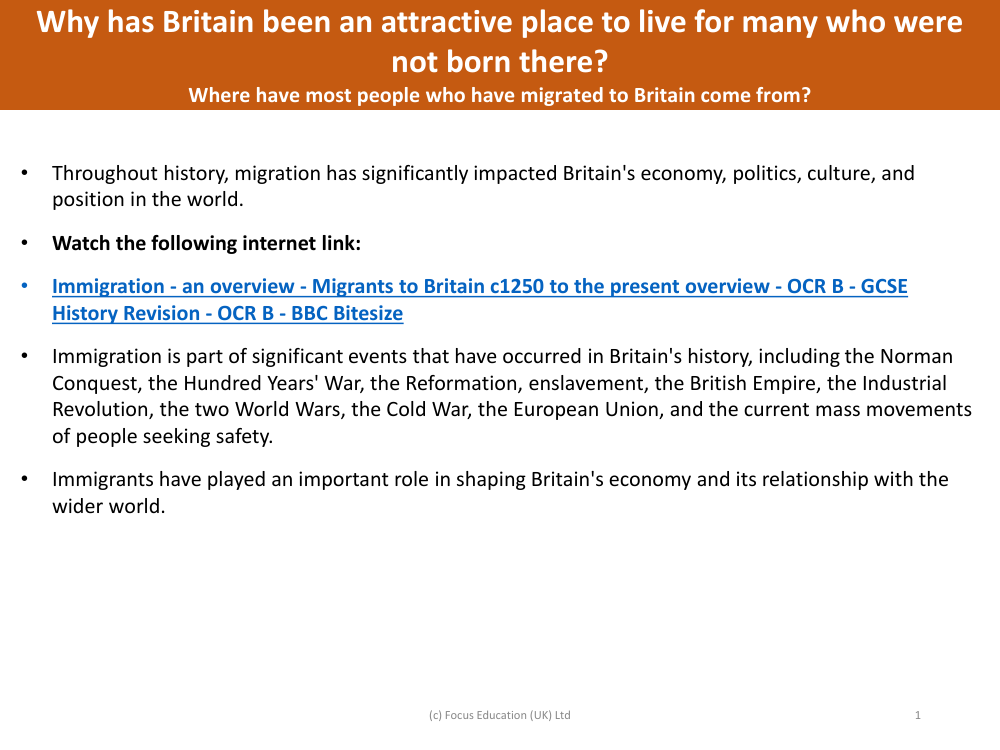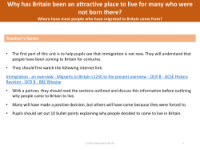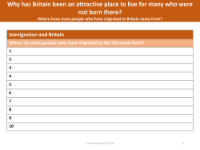Where have most people who have migrated to Britain come from? - Info Pack - Year 6

Geography Resource Description
Migration has been a defining feature of Britain's history, influencing its economy, politics, culture, and global standing. Over the centuries, Britain has seen an influx of people from various parts of the world. In the early days, the Saxons and Danes were among the first to settle, followed by the Normans who brought European Jews. The Middle Ages saw further diversification with arrivals from across Europe, including North Africans, Gypsy Travellers, and Protestant refugees. The expansion of the British Empire led to Africans and Indians arriving to work, and the Industrial Revolution attracted migrants from Ireland, Scotland, and Italy. The 20th century brought tighter immigration controls, but Britain continued to offer refuge to those fleeing persecution and wars, and later saw significant numbers of people arriving from former colonies and European Union member states. The 2012 London Olympics highlighted the diversity of Britain's population, with communities representing every competing nation.
Britain's appeal to immigrants is multifaceted. Throughout history, people have sought asylum in Britain to escape persecution, while others were forcibly brought to the country. Economic migration has also been a key driver, with individuals pursuing job opportunities and the promise of a better life. The history of immigration to Britain reveals a complex tapestry of motives and origins, reflecting the country's role as a place of refuge, opportunity, and diversity. By studying the patterns and history of immigration, one can gain insights into the ongoing debates and issues surrounding the topic in contemporary society, and understand the longstanding relationship between Britain and the global community of migrants.



